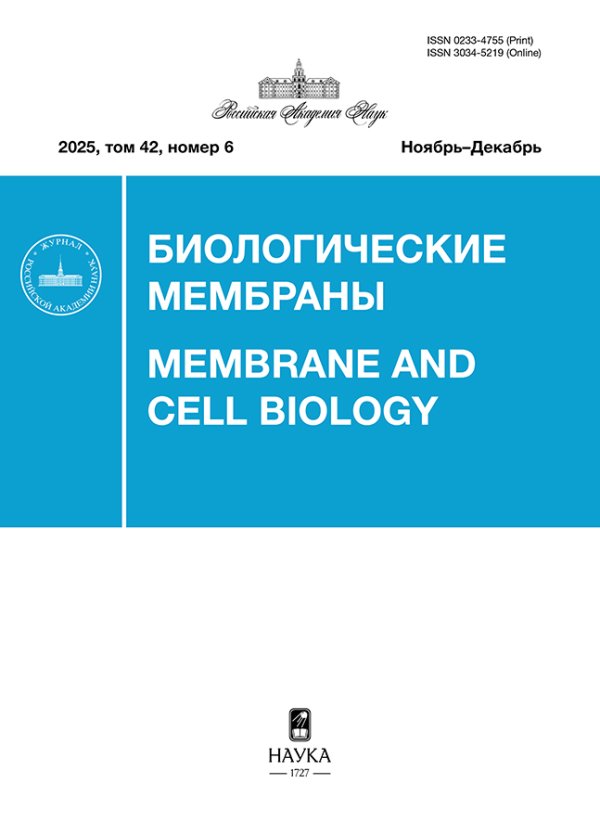Vol 40, No 4 (2023)
ОБЗОРЫ
Complement System As a Common Link in the Pathogenesis of Hemolytic Uremic Syndrome
Abstract
Hemolytic uremic syndrome (HUS) is the most common cause of acute renal failure in children. The main causes of HUS are infections caused by Shiga toxin-producing bacteria: hemorrhagic Escherichia coli and Shigella dysenteriae type 1. They account for up to 90% of all cases of HUS. The remaining 10% represent a heterogeneous group of diseases collectively referred to as atypical HUS. The pathogenesis of most cases of atypical HUS is based on congenital or acquired disorders in the complement system. Over the past decades, evidence has accumulated that, in addition to E. coli and Sh. dysenteriae type 1, a wide variety of bacterial and viral infections, including the pathogens of pneumonia Streptococcus pneumoniae, immunodeficiency virus, H1N1 influenza, and a new coronavirus infection, can cause the development of HUS. In particular, infectious diseases act as the main cause of recurrence of atypical HUS. This review presents summarized data from recent studies, indicating that in various types of infectious HUS, disturbances in the complement system are a key pathogenetic factor. The links in the complement system are considered, the dysregulation of which in bacterial and viral infections can lead to complement hyperactivation with subsequent damage to the microvascular endothelium and the development of acute renal failure.
 235-258
235-258


Membrane-Active Mitochondria-Targeted Antitumor Agents and Drug Delivery Systems
Abstract
Mitochondria are “power stations” of cells. Without them the normal functioning of a living cell is impossible. This organelle is an attractive target for antitumor therapy because of the variety of processes in which mitochondria are involved and the differences between mitochondria in healthy and tumor cells. In this review, various approaches to the development of diagnostic and therapeutic agents selectively directed to the mitochondria of tumor cells are described. The main mitochondrial vector ligands, their conjugation with known antitumor drugs, as well as their combination with common drug delivery systems are described.
 259-272
259-272


Articles
Lipid Membrane Electroporation Cannot Be Described by the Constant Line Tension Model of the Pore Edge
Abstract
We have studied the process of electroporation of bilayer lipid membranes (BLMs) from dioleoylphosphatidylcholine (DOPC). We obtained experimental data on the average lifetime of the membrane as a function of applied voltage in the range of 200–375 mV. The analysis of the data obtained showed that the dependence is nonmonotonic and cannot be described in terms of the classical theory of electroporation. These results are consistent with modern models of the process of through conductive pores formation in a membrane. The above models imply a complex pore energy profile and its dependence on membrane tension and external electric field. Thus, we have shown that the classical theory of electroporation does not satisfy the experimentally observed dependencies of the average membrane lifetime on the applied potential difference and requires further refinement.
 273-278
273-278


Benzimidazole Derivative NS1619 Inhibits Functioning of Mitochondria Isolated from Mouse Skeletal Muscle
Abstract
The activator of the large-conductance Ca2+-activated K+ channel (BKCa) NS1619 is known to have a pleiotropic action and is able to affect the functioning of other transport systems of the cell and its organelles. In this work, we have studied the effect of this benzimidazole derivative on the functioning of isolated mouse skeletal muscle mitochondria. NS1619 has been shown to dose-dependently inhibit respiration and oxidative phosphorylation of mouse skeletal muscle mitochondria fueled by glutamate/malate (complex I substrates) or succinate (complex II substrate). This action of NS1619 is based on the inhibition of the activity of complexes I, III, and IV of the respiratory chain of organelles, as well as ATP synthase and is accompanied by a dose-dependent decrease in the membrane potential of organelles fueled by the above substrates or ATP. In addition, NS1619 significantly reduces the ability of mitochondria to uptake and retain calcium ions in the matrix. At the same time, we noted the antioxidant effect of NS1619 expressed in a decrease in the production of hydrogen peroxide by skeletal muscle mitochondria fueled by glutamate and malate. The mechanisms of the possible toxic effects of NS1619 on skeletal muscle mitochondrial function and its contribution to the side effects observed in the treatment of muscle pathologies in vivo are discussed.
 279-288
279-288


Force Characteristics of Yersinia pestis Lipopolysaccharide Interaction with TLR4 and CD14 Receptors on J774 Macrophages. Atomic Force Microscopy
Abstract
One of the main stages of infectious process, which mostly determines the course and outcome of the disease, is the initial contact of the pathogen with the host cells. The lipopolysaccharide as a component of the outer membrane is crucially involved in the interaction between Gram-negative bacteria and immunocompetent host cells. It triggers immune reactions by interaction with specific receptors, mainly CD14 and TLR4. The aim of this work was to quantify the force characteristics of the interaction of Yersinia pestis EV lipopolysaccharide with CD14 and TLR4 receptors on the surface of mouse macrophages J774 by atomic force microscopy. Lipopolysaccharide was extracted from Y. pestis cells (vaccine strain EV) grown at 27°С. The expression of receptors on the cell surface was evaluated by fluorescent and confocal microscopy. Using monoclonal antibodies against CD14 and TLR4 receptors, force spectroscopy was used to estimate the force characteristics of the interaction between lipopolysaccharide on the cantilever surface and J774 macrophages immobilized on a glass substrate. The conditions for immobilization of J774 macrophages on glass were developed that allowed scanning the cell surface and estimating the adhesion force of target antigens to the cells. Incubation of macrophages in solutions with monoclonal antibodies against CD14 and TLR4 receptors caused a decrease in the major force characteristics of the interaction in the J774 macrophage – Y. pestis lipopolysaccharide system compared to the system containing untreated macrophages. A similar effect was observed after pretreatment of the cells with a solution containing the same lipopolysaccharide without monoclonal antibodies. The results show the ability of the Y. pestis lipopolysaccharide chemically bound to the cantilever to interact with CD14 and TLR4 receptors on the macrophage surface.
 289-297
289-297


Правила для авторов
 298-302
298-302












